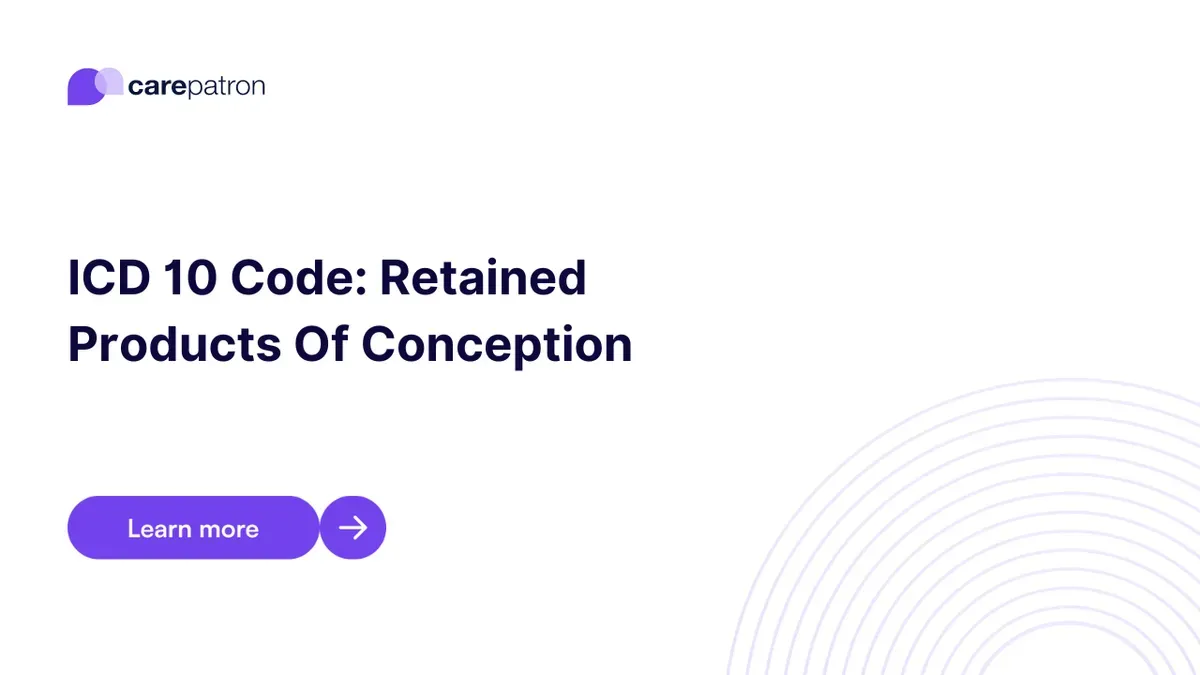
Retained Products Of Conception ICD-10-CM Codes
Explore the detailed guide on Retained Products Of Conception ICD codes for 2023. Delve into the codes, their billability, and clinical significance.
Use Code
Commonly asked questions
RPOC can lead to infections, heavy bleeding, and, in rare cases, the formation of a mass called a granuloma. Immediate medical attention is essential to prevent complications.
An ultrasound is the primary tool used to diagnose RPOC. It helps visualize any remaining tissue in the uterus after a pregnancy event.
Treatment options include medications to expel the retained products, dilation and curettage (D&C), or hysteroscopy to remove the tissue.
EHR and practice management software
Get started for free
*No credit card required
Free
$0/usd
Unlimited clients
Telehealth
1GB of storage
Client portal text
Automated billing and online payments
